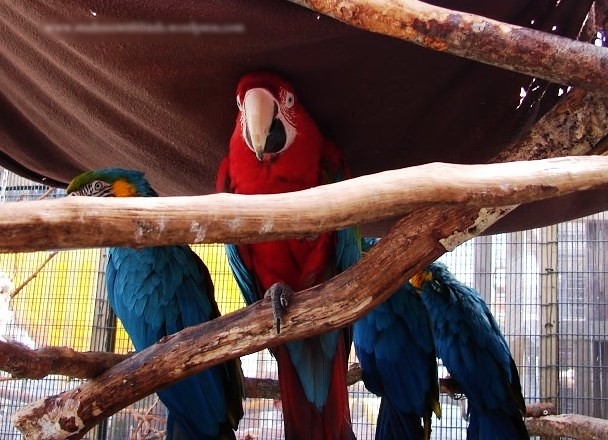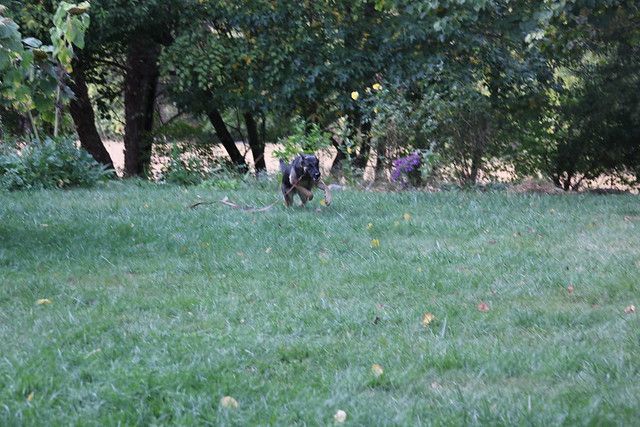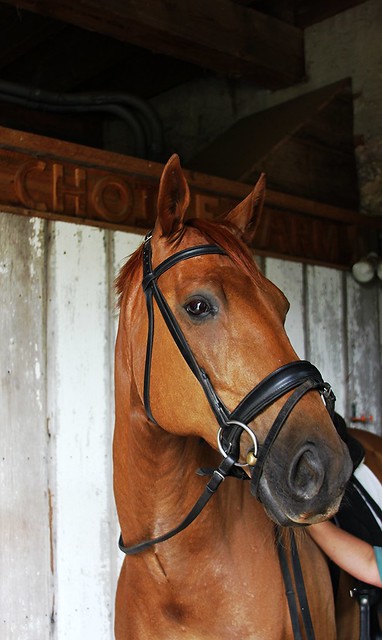Evolutionarily speaking, gathering in numbers is advantageous for everyone. Predators don’t know who to munch first unless their prey is noticeable, and thus, the fittest animals survive while the weak and sick get eaten. Parrots, dogs, and horses all find security in their groups, and tend to not like being separated from them.
I work on a farm with 1,500lb horses who all have the capacity to kill me – even though they are all wonderful animals. As with parrots, understanding their body language and behaviour is important to my wellbeing. Despite their differences, I’m able to draw many connections between training horses and parrots. A lot of us start out with experience with some other species of animal (dog, cat, or horse, usually), and while parrots are a far cry from these, you can use your knowledge to help you.
1) Herd animals find safety in numbers – always! Parrots and horses will feel safer in a group. You may notice herd-bound horses who panic when separated from their friends. It’s the same with most parrots, who will often scream until they are reunited. What’s important here is the result. Separation = anxiety. It takes trust and a lot of consistent training to teach them that separation isn’t the end of the world.
2) Short training sessions are best, large or small. Parrots, dogs, and horses all thrive with training. Short bursts give you the advantage – everyone gets the benefit of the training, without leaving time for bad experiences to even think about happening. Sometimes, a single interaction is enough.
3) Trust them to be themselves. Trust a parrot to be a parrot and a horse to be a horse. You may have an extraordinarily well-behaved and gentle individual, but in the end, you can’t expect it to be anything other than what it is. A bird will bite if it feels cornered and frightened; a horse will spook and run if something scary pops up. Understandand anticipatethe instinctive behaviour of the animal, and you’ll be a lot safer.
4) Food! Animals love the ones who feed them. A well-timed treat can also make your life very simple. Example – popping a mint into the bottom of a grazing muzzle, or offering up a piece of nut to a quietly playing parrot who has a screaming problem.
5) Consistency. It doesn’t matter what you’re teaching your animals, if you don’t do it the same way every time. A horse who gets away with running you over one day will do it again the next – because if you let it happen without correction, how is he or she to know that isn’t acceptable? A parrot who is allowed on the couch just one time because you’re super busy getting ready for work quite simply isn’t going to understand that he isn’t always allowed there. He was allowed last time, after all! If you set and enforce boundaries, your relationship with your animals will benefit.






1 comment
Do you have any blog topics that deal with tamming untame parrots( in my case budgies)? I need some advice. I purchased two then rescued two (on seperate occasions) that wereim assuming escapees. One with a leg id nothing on the other. Im asduming they were just caged bords never handles because they are super scared of humans.
Leave a comment